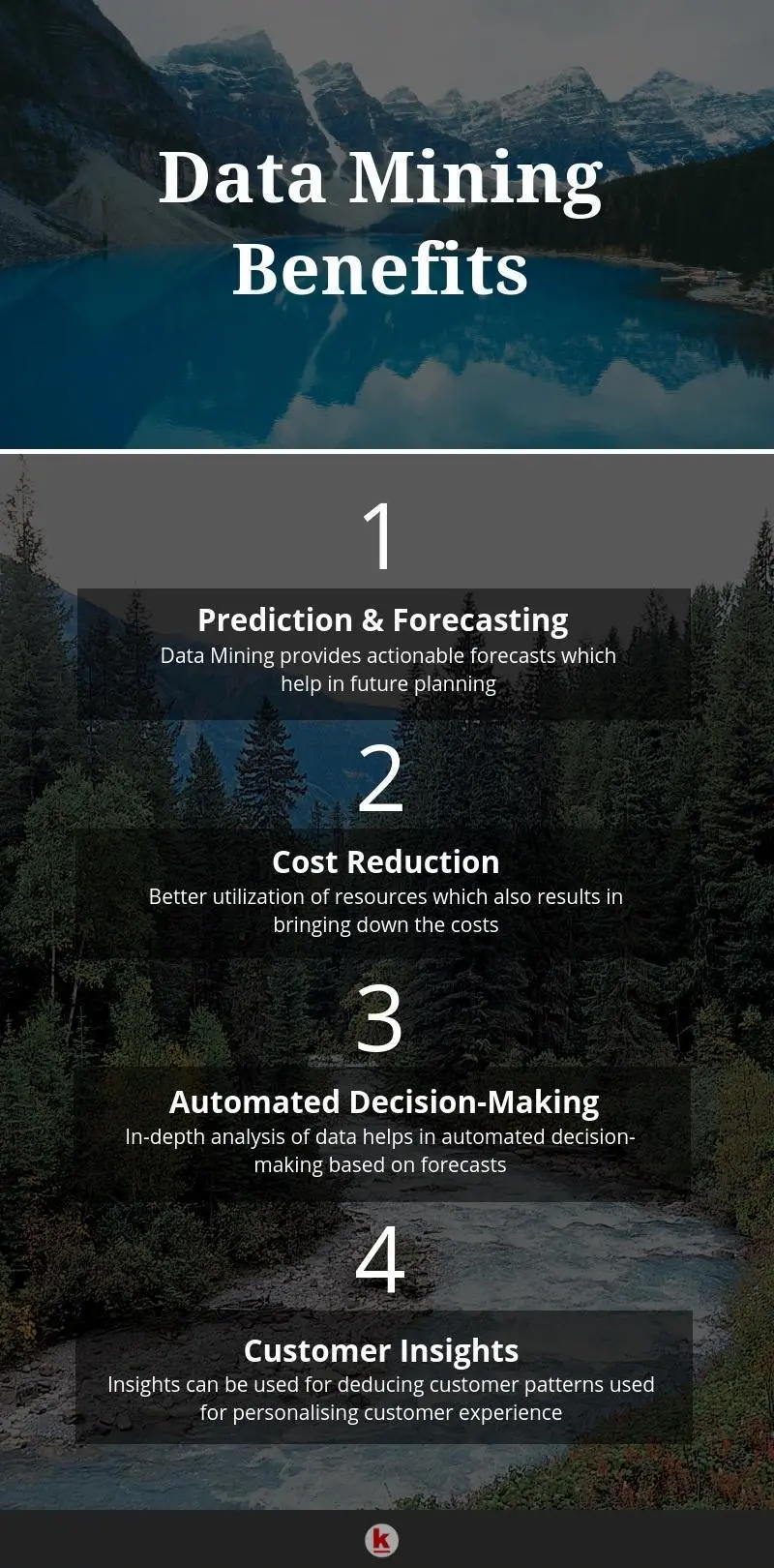Data has emerged as the new age of crude oil. It is the most prized and valuable asset of every organization. Data mining concepts have thus gained prominence in recent years due to the increasing need felt by organizations to make sense of the huge amount of data which is available to them.
What is Data Mining?
Data mining is the process of finding measurable and actionable information from huge chunks of data which is available to the organizations. Data mining concepts usually involve mathematical analysis to give meaningful information to the organization in the form of different trends and patterns which emerge from the data. The traditional techniques of data exploration have become completely obsolete due to growing complexities and amount of data. It is also known as information harvesting and makes use of skills from multiple disciplines like machine learning, artificial intelligence, and even other database technology.
Data Mining Concepts and Applications
The basic process of data mining comprises of six steps:
- Business Goals: Each project is started with a specific and measurable goal. One has to respect the same and develop a plan as per the requirements of the goals. The basic ingredients of any successful plan comprise the actions, role assignments, timelines and the role played by data mining in the above process. In this step, the basic objectives of the business are determined to take into account the current data and factor in various resources, constraints, etc. All this information analysis is important for carving out a perfect data mining plan.
- Data Understanding: This stage involves data collection from all possible sources like data cubes or flat filer. Issues like schema integration or object matching can often arise during this phase. It is a highly taxing process as it is highly unlikely that data from various sources will match. Once collected, data visualisation tools are used for diving deep into the data and looking for the data properties for confirming that the data can be instrumental in achieving the business goals, defined in the previous step. Any missing data has to be acquired.
- Data Preparation: In case of any gaps in information, the missing data is generally included in order to make the data ready for mining. This step is the longest as data processing takes a long time i.e. approximately 90 percent of the whole process time. Data which has been sourced from the previous steps is now put through selection phase where it undergoes cleaning and an absolute transformation. It is further formatted and anonymized.
- Data Modelling: Many mathematical models are used at this stage for driving patterns by making use of sophisticated data tools. Suitable techniques of modelling are selected based on business objectives. A scenario is usually created for verifying the quality and validity of the model which is further run on the prepared dataset. All the stakeholders should assess the results for ensuring that the model is in compliance with the objectives of data mining.
- Evaluation: The results of the previous steps are both evaluated and measured for success in regards to the business goals. It is quite possible that as a result of the same new business requirements surface, so one has to make the final decision for taking or not taking the whole model to the deployment phase.
- Deployment: This is the ultimate step as the results and findings of the data mining are then shared and used with everyday business operations. The results of the whole process have to simplify for the non-technical stakeholders of the business. This helps in formulating the business policy of the organization.
Advantages of Data Mining
Data mining is primarily used for drawing meaningful insights from raw data in the form of hidden patterns which point towards some developing future trends and behaviours thereby facilitating the business decision-making process. It can be stated that it is a computational process for data analysis from varied perspectives, dimensions and angles. It has been used for any kind of data like transactional databases, data warehouse, multimedia database, world wide web, time-series database, etc. Some prominent benefits can thus be summed up as:
- Prediction and Forecasting: Planning is vital to every organization. Data mining plays a leading role in this as it provides organizations with dependable and actionable forecasts in terms of real data. These forecasts are deduced from the past patterns which have been observed and the prevailing market headwinds.
- Cost Reduction: Resources of the organization are better utilized as they can plan ahead and make automated decisions based on accurate forecasting which will result in maximum reduction of costs.
- Automated Decision-Making: Insights from data mining operations help the organizations analyse data and thereby automate their decision-making processes based on reliable forecasts.
- Customer Insights: Many organizations often use data mining techniques to customer data for discovering certain key characteristics of customer patterns. Such information is used for creating special personas for customers for personalisation of every touchpoint for improving customer experience.
Some real-life scenarios where data mining finds practical applications are financial analysis, biological analysis, fraud detection, research analysis, intrusion detection, etc. Data mining helps an organization to make more informed decisions based on an in-depth analysis of the data which has been collected from different resources. Data mining concepts and tools have highly proliferated over the years so before going ahead with it, one has to have clear business objectives in place so that the right combination of tools and platforms can be used.





Leave your comments
Post comment as a guest